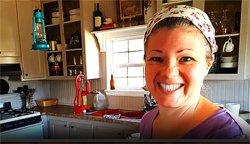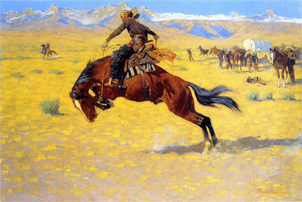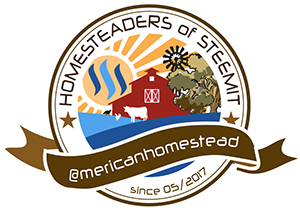Is Art Appreciation for Young Children? - Homeschooling Curriculum - By Jaimie
At What Age Does Art Appreciation Begin?

As I have grown in my homeschooling skills and knowledge, I have been purposely moving toward incorporating more than just the basic subjects into our school day. Math, science, language arts, and history will necessarily be the core of a child’s studies throughout their life in school. But my desire has always been to teach my children so much more. Feeling overwhelmed with how to do this, my husband wisely reminded me that it is all about exposure in the younger years. We don’t believe that it is about regurgitating specifically memorized facts. It is about igniting their interests as they grow. In their older school years, that early exposure will serve them well as they focus in, learn more details about any given topic, and especially learn to think critically.
Armed with this goal, I recently began to delve into the philosophies of Charlotte Mason, a British educator around the turn of the 20th century. Her belief that learning should be “a delight” and that you should “spread a wide feast” of learning experiences for children spoke to me in a way that at first made me doubt that I had been doing anything right in my own homeschooling endeavors. But more importantly, Charlotte’s philosophy gave me the inspirational message that I can do this! I can make my children’s learning delightful, inspiring, and contagious. I wasn’t crazy to think that school is more than just reading, writing, and arithmetic. Learning is life. Life is learning. Learning doesn’t and shouldn’t stop with graduation.Reading what Charlotte Mason taught her students was enlightening. It truly was a feast of information and ideas, all at the developmental stage of each child. Foreign language, great literature, poetry, art appreciation, music study of the great composers, learning the old (and almost forgotten) hymns, good habits like always giving your best attention, Scripture memory of especially the Psalms and parables, and spending time observing our beautifully created natural world. These were not overlooked subjects that were “fit in” as time allowed. These were a primary focus of a well-rounded education.
“The question is not, – how much does the youth know when he has finished his education – but how much does he care? And about how many orders of things does he care? In fact, how large is the room in which he finds his feet set? And, therefore, how full is the life he has before him?” – Charlotte Mason
In this article, I want to focus specifically on one of those things: art appreciation. It’s not a new subject to me. I studied art in high school as well as college. I was never very good at it! But I can definitely get behind the appreciation part. My parents took our family on a trip to Paris when I was 17. I’ll never forget walking the halls of the Louvre. I don’t think I truly understood what a gift that experience was at such a young age. As a college student and later on as an interior design student, I would take my student pass and get into art museums for free. I didn’t always know what I was looking at, but I always loved the experiences. Art is about making an observation about life and doing it in a visually compelling way. Art appreciation is about paying attention to detail (a great lesson for kids), and looking beyond our own parochial experiences to see something new and different.
I want all of those things for my children. But art is...well...a hard pill to swallow for a conservative mom like me. The R-rated escapades of mythological creatures, nudity, and weird religious imagery, are just a few of the questionable art themes. My children are young and still naïve to the harsh realities of our world. How and more importantly why would I choose to expose them to those realities by exploring art appreciation at this age? My husband suggested that I just bypass this part of the “wide feast” of their education at this age. But I couldn’t let it go. I still remember the emotions that “Two Young Girls at the Piano” by Renoir inspired in me as a girl. I have very fond memories of exploring Renoir and Monet art books with my friend Mindy. To this day I still compare every abstract nature piece to the work of Georgia O’Keeffe.
Charlotte Mason suggested taking the time to study one artist at a time with the goal of immersing children in their artwork so that they could distinguish it from others, as well as from work of lesser caliber. I like this idea. It’s similar to bankers studying, holding, and examining real money in order to recognize a counterfeit. With this in mind, I began sifting through artists and ruling out many as inappropriate for my children. Artists with all the questionable themes were obviously out, but so were Renoir, Monet, and O’Keefe (at least for now). I can just hear my boys balking at the “girly” themes throughout their paintings. With so many criteria, did anyone make the cut? I’m happy to say, definitely yes! Art appreciation can be for little boys!
Frederic Remington was an American artist in the 19th century who is most well-known for his scenes of the old west. Think cowboys and Indians and you will have it right. Yes, cowboys and Indians! What boy wouldn’t love that as an introduction to art appreciation? Ding, ding, ding…we have a winner! Action scenes of shoot outs, rearing horses, buffalo chases, and battle scenes are a major feature in his art at a time when the rest of America and the world still romanticized the old west. If you are familiar with the gun world, you may recognize the name from Remington Arms (producing more shotguns and rifles than any other US company). It was actually Frederic Remington’s cousin Eliphat who created this company in America when he became a gunsmith in 1816.We will also be studying John James Audubon who devoted his artwork to documenting the different species of birds in America and Winslow Homer known for his realistic scenes of marine subjects and life in 19th century America. That’s it for this school year with one artist per term, making a total of three per year. We will read a little about their art and life, and then enjoy their work throughout the term. I plan to borrow coffee table style art books devoted to each artist from the library. The book will stand open on the piano music stand so that we can examine their art throughout our school week. It seems pretty simple, but remember that the goal is all about exposure. My library also has several books from author Mike Venezia (Getting to Know the World’s Greatest Artists), which are excellent beginning resources to teach children about individual artists.
One of the beautiful things about homeschooling is being allowed and even encouraged to cater our children’s learning experiences to things that are meaningful to them. I get to enjoy this every day. Just this afternoon as the boys and I sat down to lunch, I listened to a barrage of questions and thoughts about whether or not Ellen would make it to Elizabeth- town, and what my boys would do if they were in her shoes. They both agreed that Kaleb (my feisty youngest) could definitely run all ten miles! (We are enjoying “Toliver’s Secret” by Esther Wood Brady as a resource in our studies about the American Revolutionary War.) That’s what makes learning enjoyable for both parent and child and I have more and more of these kinds of moments as I learn to spread a wide feast for my children.


Jaimie is a writer and vlogger for AnAmericanHomestead

Visit Us Online: http://AnAmericanHomestead.com








Great Post!
We homeschool our children as well and it is always a challenge to find anything in the arts sector that is what I would consider appropriate for our children. Everything from music to movies to paintings and drawing as you featured here seem to be geared towards stripping our children of their innocence in this world. I often ask myself who would want to do this to our children and why, but I am unable to understand exactly how those in charge of the public education system think this garbage will benefit the future generations whom they are responsible for educating.
Thanks again for the suggestions. I may have to steal a few of these for my children and their education.
Thanks for the comment. This is one of many reasons why we decided to homeschool.
Your quote from Mason reminded me of a quote often attributed to Theodore Roosevelt:
"Nobody cares how much you know, until they know how much you care."
I feel that art appreciation is for all people, of all ages and, as you point out, it is important that the art be appropriate for the audience. Mainly, this is so that it can be fully, genuinely appreciated.
Thank you! Great Comment!
Love this, Jamie!
I went to college to be a painter and an art educator. It was such a strange experience to want to instill good values, hope, careful attention to detail, and craftmanship in the hearts of my young students while studying the work of artists who, quite frankly, didn't always exhibit these traits. I constantly found myself at odds with my training...for example, how do I teach 3rd graders about Dadaism?? Should I even be teaching this to them? How can a 9 year old possibly understand the motivations of the "lost generation?"
Especially now that I am a mother, homesteader (how life changes!!) and homeschooler-to-be (the boy is small, still), I am curious how I can meaningfully share art with my kids while still teaching the moral, spiritual, and cultural values that I think are important (by the end of college, after more art exhibits than I can count, I was a little jaded by the "ANYTHING AND EVERYTHING IS ART" mentality).
I love that you're opening up the world of art to your boys with Audubon and Remington. They're a fun bunch to work with, I imagine! A modern artist that I also really enjoy is John Muir Laws--he does a lot of work with field sketching and nature observation, and has some awesome books on the topic. I also loved sharing N.C. Wyeth with my young students--very evocative pieces.
GUYahh, you must have hit a nerve, because I didn't mean to write you a novel! Thanks so much for sharing your thoughts. Looking forward to oneday teaching my own. :)
I love this! Thank you!! I'm excited to get started with art appreciation. I wish I had begun sooner. N.C. Wyeth is on the list for the following year already. :) As is J.M.W. Turner and Pieter Bruegel. I can't imagine looking at Bruegel's work and not being impressed that THIS is fine art. I'm not worried about the kids learning specifics at this age. I just want them to learn to enjoy the art and maybe broaden their worldview a little in the process.
I think that's a nicely-balanced approach to art with kids. So many of the curricula and guides that I used/perused through as a teacher emphasized time periods, art styles, and other -isms. While I think these can be fascinating, I don't think any kid is really going to latch on to that stuff...it's just not as interesting as getting to see another cool painting! Like you said, get them exposed to some (discerning) material, see what whets their creative appetites, and work from there.
if you want something done right.
if it is important to you
do it yourself.
Yay homeschooling..
Absolutely! THANK YOU!
I remember when I was about 6 years old I went with my older sister to sell girl scout cookies to Georgia O’Keeffe. We went to her home in Abiquiu, New Mexico. While my sister talked to her about the cookies, I stood at her easel and looked at the painting of a big flower she was working on. I stood with my hands behind my back, where she could see them and know that I was not going to touch anything. On the wall, next to a window was a painting of a cow skull. It is a favorite memory of mine from that time in my life.
Art appreciation should begin in my opinion in utero and fostered the moment they are born. My son attended a gallery opening at 3 weeks and through his life has been exposed to artists, music and the likes. Art is a common language so I know wherever life takes him he will always have something to talk about and be able to find like minded individuals. I homeschooled too as my husband at the time was a professional trumpet player and we had the opportunity to tour with some famous artists!
Art is life☺️
I think it is fabulous that you are exposing the kiddos to different types of art at a young age. What I remember from public school was that there was a "right way" to draw or paint or whatever. To this day, I am blown away when I see an artist who has explored something that I could never have imagined...be it using an unusual medium, abstract representation, unique display, etc. The more your children can be exposed to "out-of-the-box" thinking and creating, the more awesome they will become :)
I enjoyed this piece and am always happy to see articles about homeschooling on Steemit! I have followed and hope you write more. I write about art education and children as well, and hope you might check out some of the posts on my blog.
I am interested in the Charlotte Mason approach and had not heard much about the specifics of art instruction in that mode of homeschooling. I really like to think of art as a visual means of expressing ideas and am not sure my small children have the attention span to explore the ideas of one artist for a whole term.
Next year we will do three art units, one on landscape (to mesh with our explorer theme), one on mother-sculptures (to mesh with our indigenous and subsistence living theme). My plan is to take 10 pieces and examine the ideas that drove the creators.
I think Audobon captures a moment in time when people really believed in the patient cataloguing of all of the wonders of the world. There is a hope and optimism in that type of work. While technically brilliant, he is not the most interesting artist to me. Remington, on the other hand, is a classic storyteller in the tradition of the great renaissance painters. His works really capture a lot of ideas about the American West.
Good luck!